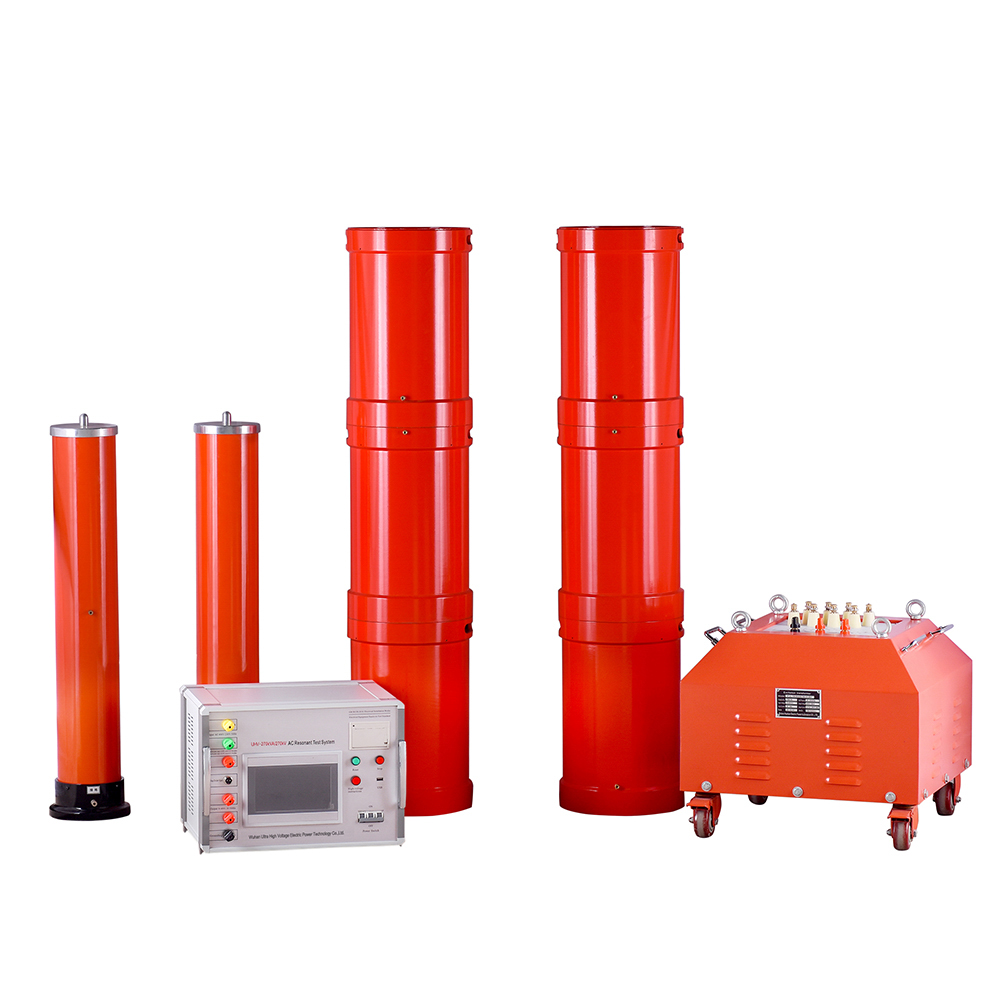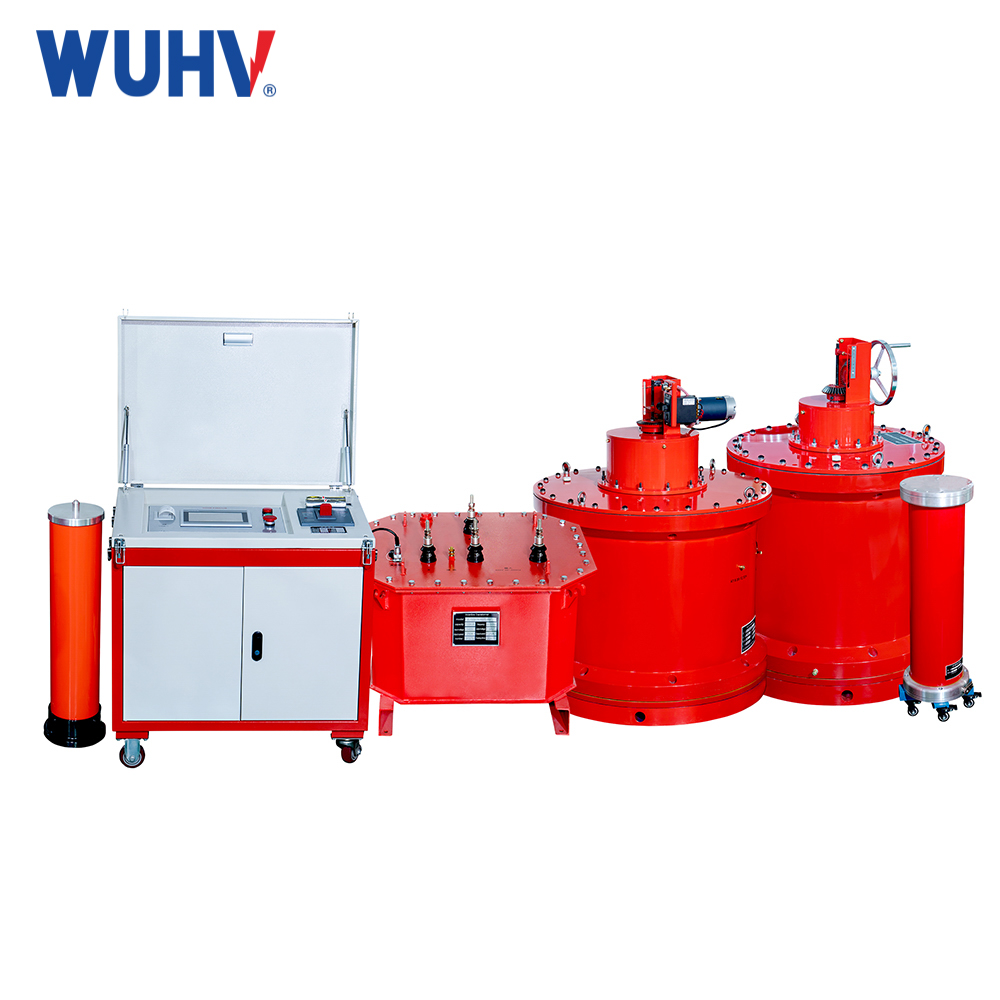The series resonance under UHV power can help many power workers conduct various power tests more conveniently.

In a series circuit composed of resistors, inductors, and capacitors, when the capacitive reactance XC is equal to the inductive reactance XL, i.e. XC=XL, the phase of the voltage U and current I in the circuit are the same, and the circuit exhibits pure resistive behavior. This phenomenon is called series resonance.
Series resonance is divided into frequency modulation and induction modulation. It is generally composed of a variable frequency power supply, excitation transformer, reactor, and capacitive voltage divider. The capacitor and reactor of the test sample form a series resonant connection; The voltage divider is connected in parallel to the test sample to measure the resonant voltage on the test sample and provide an overvoltage protection signal.
Series resonance, also known as series resonance transformer, variable frequency resonance, variable frequency series resonance, series resonance test equipment, series resonance principle, and series resonance application series resonance system.
When a series resonance occurs in the circuit, the impedance Z=√ R ^ 2 (XC-XL) ^ 2=R, the total impedance in the circuit is minimized, and the current will reach its maximum value. The variable frequency series resonance test device applies the principle of series resonance, uses an excitation transformer to excite the series resonance circuit, adjusts the output frequency of the variable frequency controller, and causes the circuit inductance L and the test sample C to resonate in series. The resonance voltage is the voltage applied to the test sample. The frequency conversion resonance test device is widely used in industries such as power, metallurgy, petroleum, and chemical engineering, and is suitable for the handover and preventive testing of high-capacity, high-voltage capacitive specimens. The BPXZ series resonant withstand voltage device mainly consists of a frequency converter controller, excitation transformer, high-voltage reactor, high-voltage voltage divider, etc. Variable frequency controllers are divided into two categories: desktop controllers with 20KW and above, and portable box controllers with 20KW and below; It consists of a controller and a filter. The main function of a variable frequency controller is to convert a 380V or 200V AC power frequency sine wave with fixed amplitude and frequency into a sine wave with adjustable amplitude and frequency.
Principle of series resonance
When the circuit frequency f=1/2 π√ LC, resonance occurs in the circuit, and the voltage on the test sample is Q times the output voltage of the excitation transformer high voltage end. Q is the system quality factor, which is the voltage resonance multiple, generally ranging from tens to hundreds or more. First, adjust the output frequency of the variable frequency power supply to induce series resonance in the circuit, and then adjust the output voltage of the variable frequency power supply under the condition of circuit resonance to achieve the test value of the sample voltage. Due to the resonance of the circuit, a smaller output voltage of the variable frequency power supply can generate a higher test voltage on the test sample CX.
Advantages of series resonant products
1. The required power capacity is greatly reduced. The series series series resonance test device uses resonant reactors and the capacitance of the test object to generate resonance, thereby obtaining the required high voltage and high current. In the entire system, the power supply only needs to provide the active consumption part of the system. Therefore, the required power supply for the test is only 1/Q times the test capacity (Q is the quality factor).2. The weight and volume of the equipment have been greatly reduced. In a series resonant power supply, not only is the bulky high-power voltage regulating device and ordinary high-power power frequency test transformer eliminated, but the resonant excitation power supply only requires 1/Q of the test capacity, greatly reducing the system weight and volume, usually 1/5-1/10 of ordinary test devices.
3. Improve the output voltage waveform. A resonant power supply is a resonant filtering circuit that can improve the waveform distortion of the output voltage, obtain a good sine wave, and effectively prevent the false breakdown of the test sample caused by harmonic peaks.
4. Prevent large short-circuit currents from burning the fault point. In the resonant state, when the weak point of the insulation of the test sample is broken down, the circuit immediately loses resonance (capacitance changes, not meeting the resonance condition), and the circuit current rapidly drops to 1/Q of the normal test current. When conducting AC withstand voltage tests using parallel resonance or traditional test transformers, the breakdown current immediately increases by several tens of times. Compared to the two, the short-circuit current and breakdown current differ by hundreds of times. So, series resonance can effectively identify insulation weaknesses without the concern of large short-circuit currents burning the fault point.
5. There will be no overvoltage recovery. When the test sample experiences breakdown and flashover, due to the loss of resonance conditions, the high voltage immediately disappears, the arc is immediately extinguished, the protective circuit of the device is activated, and the output is cut off.



















